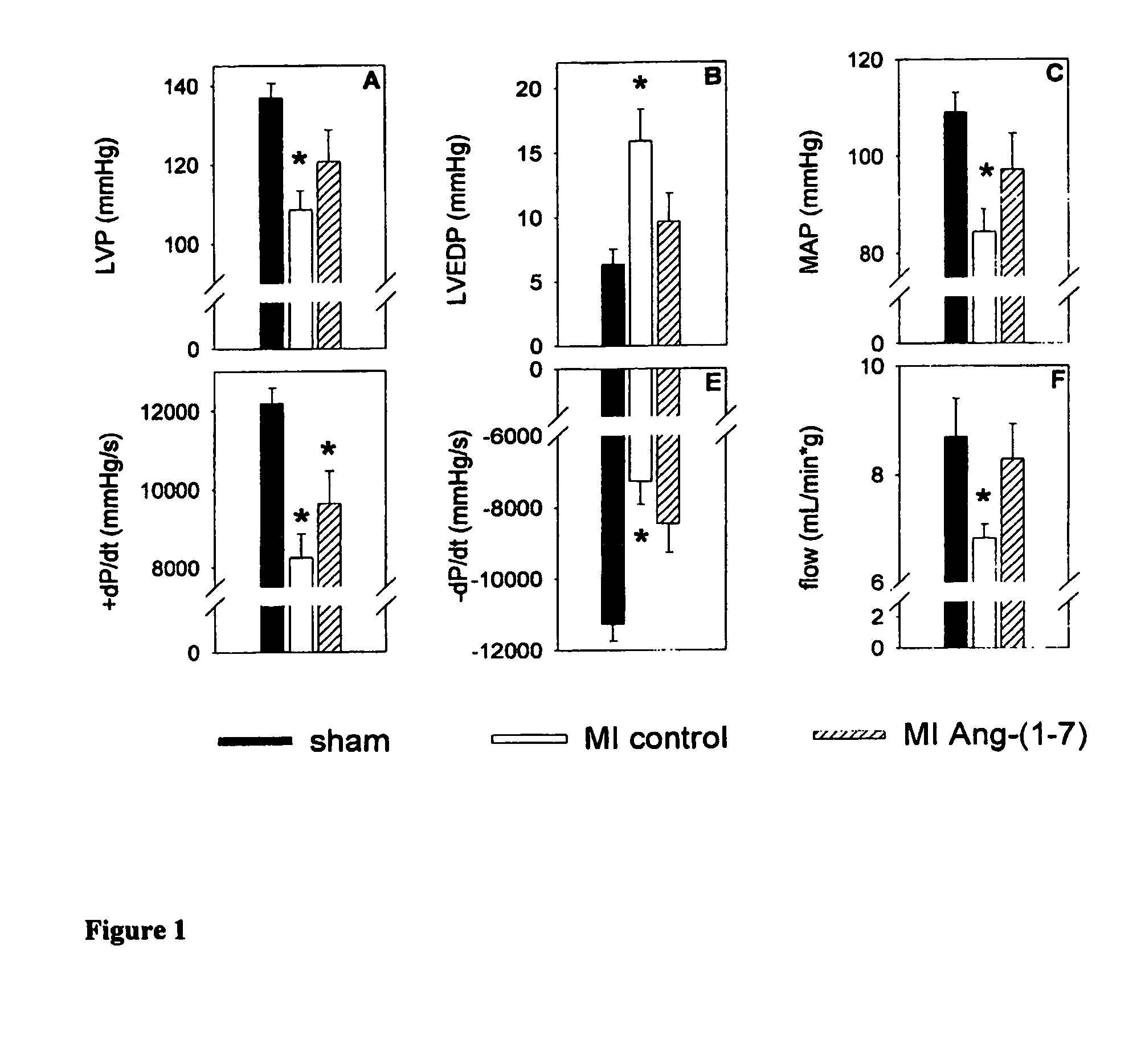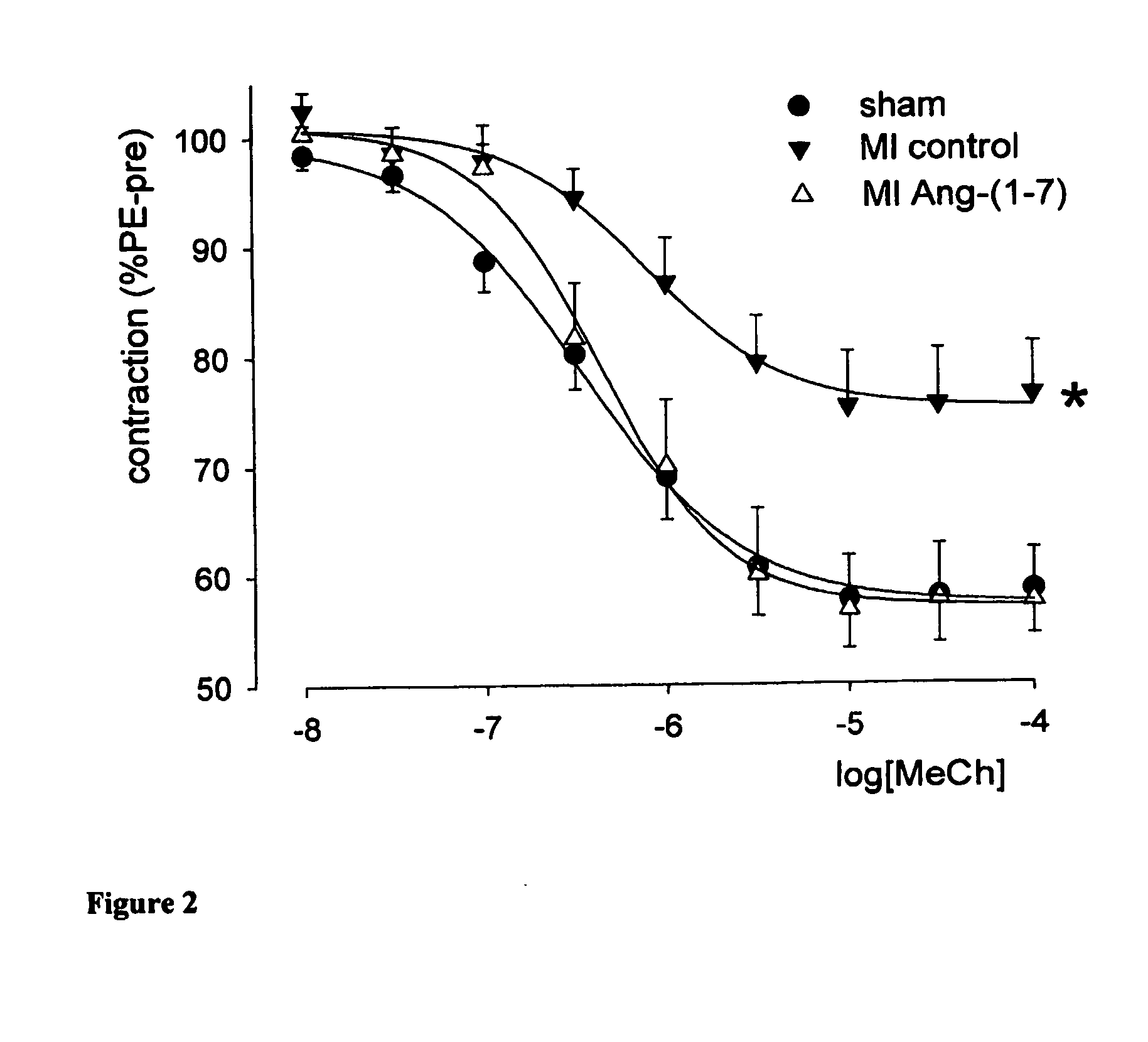Use of angiotensin 1-7 for enhancing cardiac function
an angiotensin and cardiac function technology, applied in the field of biotechnology and medicine, can solve the problems of cardiac dysfunction, cardiac function deterioration in the long term, cardiac failure, etc., and achieve the effect of enhancing stability and facilitating administration
- Summary
- Abstract
- Description
- Claims
- Application Information
AI Technical Summary
Benefits of technology
Problems solved by technology
Method used
Image
Examples
examples
Experimental Design
[0043] The Animal Research Committee of the University of Groningen approved this study. Left coronary artery ligations were performed in 39 male Sprague-Dawley rats weighing 250 to 300 g (Harlan; Zeist, the Netherlands).14 Perioperative mortality was 49%. Two weeks after induction of MI, rats were randomly allocated to intravenous infusion of either Ang-(1-7) (24 μg / kg per hour; n=10) or saline (n=10) by osmotic minipumps (Alzet 2004). Sham-operated controls (n=10) received saline. After eight weeks of treatment, hemodynamic studies were performed under isoflurane anesthesia with a microtip pressure transducer,15 coronary flow was measured in a Langendorff setup,14 endothelial function was tested in isolated aortic rings,14 and plasma Ang-(1-7) levels were measured by radioimmunoassay.16
[0044] Midventricular slices were processed for histochemical analysis. Infarct size was determined on picrosirius red / fast green-stained sections and was expressed ...
PUM
| Property | Measurement | Unit |
|---|---|---|
| pressure | aaaaa | aaaaa |
| diastolic pressure | aaaaa | aaaaa |
| pharmaceutical composition | aaaaa | aaaaa |
Abstract
Description
Claims
Application Information
 Login to View More
Login to View More - R&D
- Intellectual Property
- Life Sciences
- Materials
- Tech Scout
- Unparalleled Data Quality
- Higher Quality Content
- 60% Fewer Hallucinations
Browse by: Latest US Patents, China's latest patents, Technical Efficacy Thesaurus, Application Domain, Technology Topic, Popular Technical Reports.
© 2025 PatSnap. All rights reserved.Legal|Privacy policy|Modern Slavery Act Transparency Statement|Sitemap|About US| Contact US: help@patsnap.com


